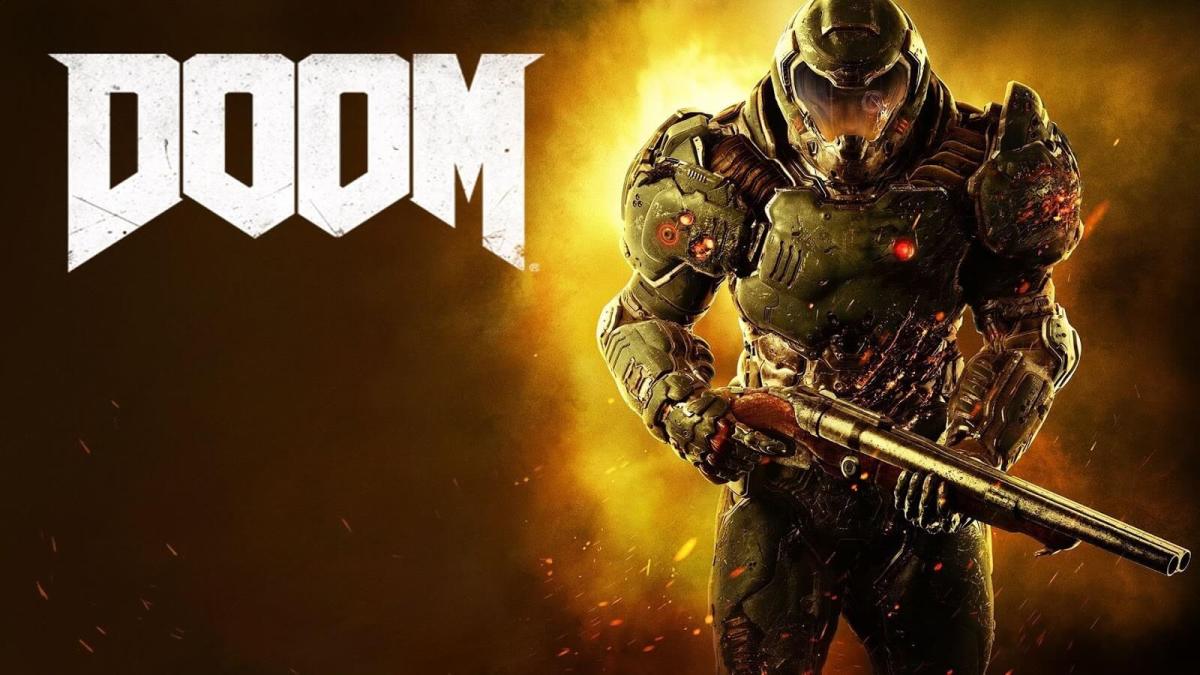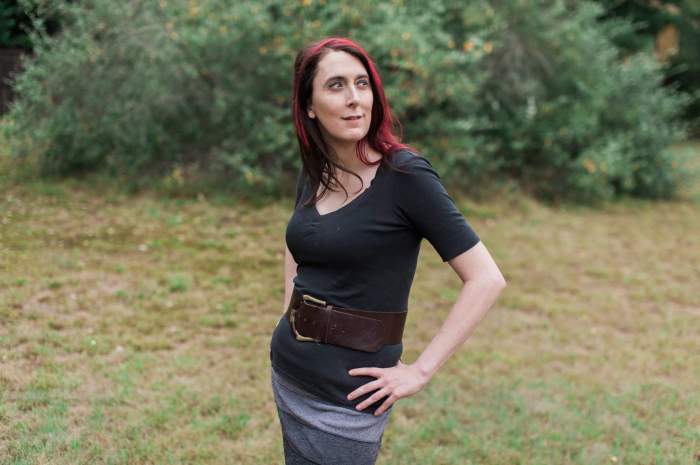A pioneer and icon of pop culture, Doom’s best known for all its blood and gore. The concept behind Doom is simple: eliminate the enemy as quickly and efficiently as possible. Oh and try not to wet yourself in fear. Hugo Martin, part of the development team at Id Software, spoke with Metro about what’s new in the gun-toting world of Doom.
Doom is considered by many as a pioneer in the first-person shooter genre as well as one of the genre’s more violent entries. How do you anticipate this to be reflected in reviews?
People who have tested it here have always commented on how fun the game is and how it feels like Doom, which is what our main goal has always been for this game. I think we are offering a lot of value with the three components of SnapMap, single player and multiplayer. This is something that should please both the critics and the fans of the franchise as well as people who are new to Doom. RELATED:Esports continues to rise in popularity, gain mainstream acceptance in United States What elements of the game are the same as the original 1992 version and what’s new?
The combat feels like it does in the original Doom games where movement, dodging projectiles and powerful gunplay are part of the core experience. We have expanded on players’ traversal abilities and added in Glory Kills (melee finishers), which add to the combat experience, while not interrupting the flow of fast and fluid gameplay. In what ways does Doom reflect the essence of the franchise, considering the ways in which the first-person shooter genre has changed since the franchise’s birth?
The core of any Doom was always combat and that is where the main focus of this game lies. The tone of our game stays true to the original: comic book gore, hellish environments, powerful guns and memorable demons with personality. What made you decide to change the original 2011 Doom 4 concept in favor of the new Doom of 2016?
The decision was made to change direction in favor of something that was more Doom and more true to the original games from the mid-nineties. We wanted something that was more about movement over taking cover, dodging projectiles and no regenerating health. We wanted to bring the fans something that felt uniquely Doom, like nothing else. We worked hard to achieve that goal and I really think the fans will see that once they pick up the game. What can you tell us about Doom’s new story?
The focus of Doom was never really about story, it was always more about the combat and that has been our focus on this Doom. Having said that, this game does have a narrative component to it, but the emphasis is more on lore and mystery than it is a conventional story. The story was set up to stay out of a player’s way; it’s there in the corners of the levels waiting to be discovered if the player wants it, but most of it can be avoided in favor of the gameplay should the player choose. If the player explores the levels they can piece together what happened at the facility and how you got there and who the Doom Marine is. It’s a story that will require player participation as we leave a lot of elements open to interpretation. Players can pick up data files throughout the world to piece together the detailed lore of the Doom universe and they can watch echoes to find objective clues or information about the UAC and the characters in the game, including the Doom Marine himself. With so many shooters on the market, how does Doom innovate? How does it differentiate itself?
A lot of shooters in today’s market employ a regenerative health system and a lot of guns with ADS (Aim Down Sight) to encourage the player to fight at a distance and play with caution. In Doom, we have what we call a “push forward combat” system which requires the player to fight more aggressively in order to survive. If you hide behind cover, you will die. If you stop moving, you’ll get crushed by the demons. The guns and the complimentary Glory Kill mechanic we have encourages the player to take the fight to the enemy, charge into the battle and attack the enemy constantly. In the moment improvisation is high in our game as the player, at any time, has access to a variety of ways to attack the enemy without ever feeling like they have to break the flow of their combat to do it. It is fast, violent and fluid and uniquely Doom. In what ways does Doom represent a new direction for the franchise?
We think it plays like a DOOM game; it stays true to the original in terms of the combat and overall tone of the game. Without giving too much away, where it differs is in the story of the Doom Marine. Players have been looking forward to a new Doom for many years. How will you mix the old school style of the game with the new mechanics of modern gaming?
We focused on what we felt was fun in the game. Any mechanic we put in the game had to be fun first, regardless of whether it was considered old or new. We have key cards in the game, for example, but they are there because they make the game fun first. The fact that they are part of the original Doom game is, of course, important to us, but we would not keep it as a part of the experience if it didn’t feel enjoyable for the player. Doom’s soundtrack has always been special, drawing clear inspiration from the heavy metal genr, including; bands such as Slayer, Pantera, and Metallica. Can we expect the same “heaviness” from the new Doom? Yes, we have a great soundtrack and it’s something people who have played the game have really enjoyed. It’s a powerful supporting element in any Doom game and we feel it really enhances the visceral nature of the combat. We have a lot of different types of music in our game drawing inspiration from several sources – not just always metal. This was a conscious decision and something we felt would help add variety to the overall game experience. It all stays true to the Doom experience and we think it’s a real highlight of the game. Original Doom players are accustomed to the franchise’s high level of difficulty. With a whole new generation of players, is the new Doom taking a lighter approach or can we expect the same degree of insanity? There is something for everyone when it comes to difficulty in this installment of Doom. The default difficulty (Hurt Me Plenty) is challenging but accessible to the uninitiated. The proceeding difficulties are there for those looking for a more demanding experience and the Nightmare difficulty is were the most hardened players will be pushed to their limits. Historically Doom is a franchise mostly linked to a single player experience, why has it decided to include multiplayer and make it such an important component of the game?
We feel like that’s part of what makes a complete FPS shooter experience. While Doom does not have the legacy that Quake has when it comes to multiplayer, there was a component of PVP in the original Doom game and so we felt it appropriate to include one in this game as well. That part of the game was less defined in the originals and we felt there was more freedom to make Doom’s multiplayer its own experience separate from Quake and what had come before. Considering its importance to the final game, what can you tell us about the multiplayer mode that differentiates it from other multiplayer games?
The focus is on player movement: you have to constantly stay on the move in order to survive, camping in doorways or behind cover for long periods of time is not an encouraged activity. Doom’s multiplayer is very accessible even on the first few rounds of play. It was designed with every player in mind and it’s fun from the first time you play. We have unique game modes like Warpath to choose from and a customization system that provides players with a huge variety of options to choose from while personalizing their character. Also, you can play as a demon. The combination of elements in our multiplayer creates a unique and challenging experience for fans of PVP gaming. Are there any plans to add a co-op mode for single players?
With SnapMap, players have the ability to create a co-op experience with their friends in any way that they want using the powerful tools provided with that component of the game. You can make your own content or play co-op maps created by others. We are excited to see what the fans come up with. How do you attract new players who don’t know the title, and who are accustomed to elaborate stories?
I think if the game is fun, regardless of the title or their knowledge of the game prior to playing it, they will enjoy it and recommend it to others. Not every game has to have a huge story with lots of cut scenes in order to be fun and our main focus has always been on making an action packed game that is enjoyable for everyone. What can players expect from the campaign as far as its duration is concerned?
If a player takes the time to explore a lot of the secrets in the levels and digs into the progression systems, then it has been estimated by playtesters to be about a thirteen hour game. Obviously, the difficulty settings and your personal play style will dictate exactly how long the game will take you to complete. In the first Doom games, the levels were designed for the player to be mindful of enemy positions and use the environment as a weapon to his or her advantage. Will we see these kinds of environments return in the new game? Absolutely! The game is built around this idea. As you said, that is classic Doom combat level design and it’s something we worked hard on getting right in our game. This game had to feel like a Doom game first and foremost. Would you say this new DOOM is for the original game’s fan base, Doom 3’s fan base, or both?
I would say original fan base, but fans of Doom 3 will find plenty of call backs to that game as well, especially in the visuals. The Hellknight, for example, is an homage to the Hellknight from that installment of Doom. Since Doom never had a multiplayer mode, why did id Software create a fast-paced arena-style multiplayer experience?
Because we feel that fans of FPS would want to see a PVP experience in this Doom game. As you pointed out, the original Doom did not have an expansive multiplayer mode like Quake, for example, and we felt this allowed us a certain level of freedom when it came to the development of the multiplayer in this game. We want Doom’s multiplayer to stand on its own and we think we’ve made something fans will enjoy regardless of their experience with these types of games. With the popularity of eSports increasing, does id Software see Doom as a contender in the eSports arena?
We are excited to see the multiplayer grow organically in that area of gaming. We certainly hope the fans will dig in and compete in our multiplayer at the highest level and we will support whatever the community for Doom multiplayer develops into following the release of this game. id Software has been around for 25 years now and is still one of the most important game developers of all time. Unsurprisingly, the industry and gamers still have high expectations from the studio. How do you deal with this pressure? Or would you say there is no such a thing as pressure? Haha. Of course there is pressure, but it’s what makes the whole process fun and exciting for us. We love developing games at the highest level for the fans to enjoy and we welcome the opportunity to do that. The FPS genre is a genre we helped create and we are thrilled to be able to provide fans of id with a new Doom experience. We love the game and we can’t wait to share it with everyone.
DOOM – Fight Like Hell Cinematic Trailer
























